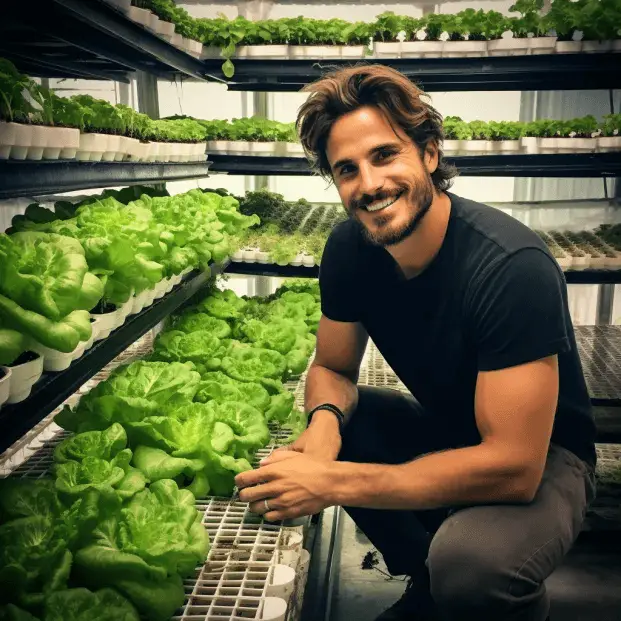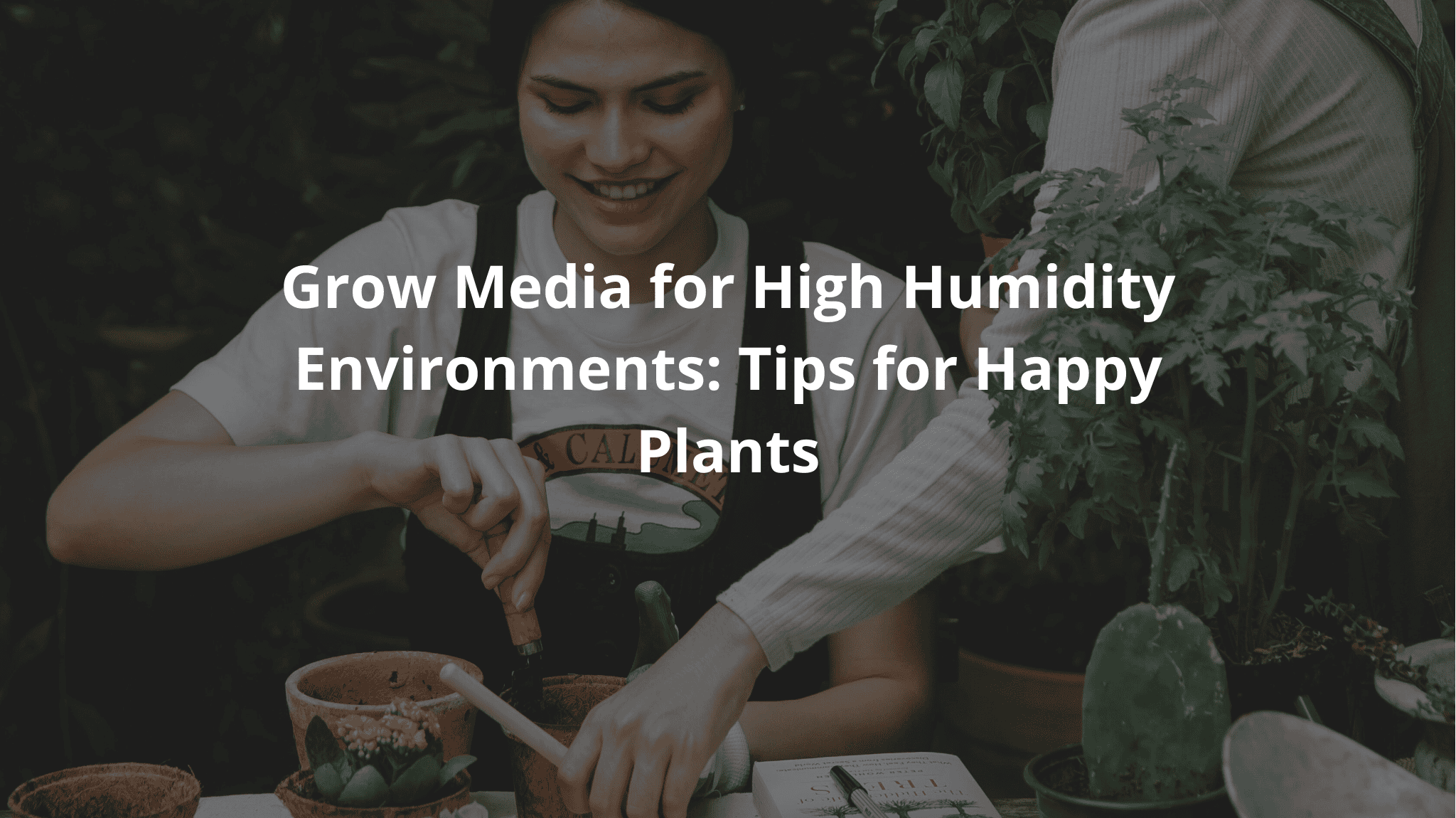High humidity can be tricky for plants. Someone noticed this while trying to grow a little garden in their backyard. Some plants, like spider plants, were doing great, while others seemed sad and droopy.
This made them think about how important it is to help plants grow in humid conditions. When humidity levels are high, plants can face challenges like root rot and too much moisture. So, let’s explore how to choose the right grow media and keep plants happy!
Key Takeaway
- The right grow media helps plants breathe and drink water properly.
- Managing humidity levels can prevent diseases like root rot.
- Using fans and dehumidifiers creates a perfect environment for plant growth.
Understanding Grow Media for High Humidity
Credits: Curiosity Insight
When dealing with high humidity, choosing the right grow media is very important. It helps plants grow strong roots and stay healthy. Picking the right media is like choosing the best shoes for a race. Heavy boots won’t help you run fast, right? Plants need the right support too.(1)
- Water Retention and Air Flow:
- The grow media should hold water but also let air pass through. If there’s too much water, roots can suffocate, which is bad for plants. Media like coir or bark mixes can keep moisture while still allowing air to reach the roots. This balance is key for plants to do well in humid areas.
- Preventing Diseases:
- High humidity can lead to diseases like root rot. No one wants sick plants! Picking a grow medium that dries quickly can help lower these risks. Adding materials like perlite improves drainage and keeps roots from sitting in water.
- Managing Nutrients:
- In humid conditions, nutrient solutions can become unbalanced. Flushing the grow media regularly is helpful. This means gently rinsing it with diluted nutrients to keep it healthy. Just like people need a balanced diet, plants need balanced nutrients!
Optimal Humidity Levels for Different Growth Stages

Every stage of a plant’s life needs different humidity levels. It’s similar to how people dress differently for winter and summer. Here’s a simple guide:
- Seedlings and Cuttings: These young plants thrive in very humid conditions, around 75-100% humidity. This high humidity helps them sprout and grow strong.
- Vegetative Phase: As plants grow, keeping humidity at 60-70% helps the leaves become big and green.
- Flowering Phase: When it’s time to bloom, lowering humidity to 40-55% prevents mold. This helps plants absorb nutrients better.
Management Strategies for High Humidity
Keeping plants happy in high humidity requires some smart moves. Here are some useful strategies:
- Ventilation:
- Good airflow is very important. Fans can help circulate air around the plants. This stops moisture from building up, which can cause problems. Learning this helped the plants look much better!
- Dehumidifiers:
- These machines remove moisture from the air. They help keep humidity at the right level, especially after watering. Many people notice their plants perk up after using one!
- Temperature Control:
- Warm air holds more moisture, which can lead to too much humidity. Air conditioning can keep things cool and dry. This helps keep plants safe and happy.
- Watering Practices:
- Timing matters. Watering in the morning gives plants a chance to dry out before night falls. This reduces the risk of fungal diseases, which can be a big issue in humid weather.
Balance Between Porosity and Water Retention
When choosing grow media, it’s important to think about how porous it is. The right mix is crucial for air circulation and water movement. Here are some things to keep in mind:
- Porosity:
- This shows how much air can get into the grow media. Good media allows roots to breathe while keeping water flowing. Just like people need both air and water to live, plants need this too.
- Water Retention:
- It’s important to have enough moisture for plants but not too much. If it’s too wet, roots could suffocate. Finding that perfect balance is key for healthy plants!
Structural Characteristics
The structure of grow media is very important. Here’s what to look for:
- Well-Balanced Structure:
- A good structure helps roots grow properly. It allows water and nutrients to spread evenly. It’s like a perfectly baked cake; you want just the right mix of ingredients!
- Effective Drainage:
- Drainage prevents water from piling up, which can cause diseases. Good drainage keeps plants from getting stressed out!
Aeration and Root Space
Roots need space to grow and breathe. Here’s why aeration is important:(2)
- Good Aeration:
- This keeps oxygen flowing to the roots. Oxygen is essential for their growth, just like how people need to breathe.
- Space for Unrestricted Root Expansion:
- When roots have room to grow, plants can thrive. They won’t feel cramped, which leads to strong and healthy growth.
Specific Materials Suitable for High Humidity
Some materials work better than others in high humidity. Here’s a list of great options:
- Coco Coir:
- Holds water well (60-70%) and provides good aeration.
- It has a neutral pH, making it a versatile choice for many plants.
- Perlite:
- It’s lightweight and helps with drainage.
- This sterile material keeps pests away, which is a big plus!
- Vermiculite:
- Good at holding moisture (60-90%) and nutrients, which reduces the need for constant watering.
- It’s perfect for acid-loving plants like some types of cannabis.
Using these materials can create a perfect environment for plants. They will have the right balance of water, air, and nutrients they need to grow healthy.
Conclusion
Understanding grow media for high humidity environments is important for successful plant growth. Choosing the right media, controlling humidity levels, and using smart management strategies can help plants thrive. By providing the perfect conditions, gardeners can enjoy a lush, green space filled with healthy plants. Keeping an eye on moisture levels is essential, as happy plants lead to happy gardeners!
FAQ
What are the common types of grow media suitable for high humidity environments?
Common types of grow media for high humidity include peat moss, coco coir, pine bark, and rice hulls. These materials help hold water while allowing air to reach the roots. Mixing these growing media can support root growth and prevent root rot. When choosing a grow medium, look for options that manage excess water and keep the right pH level to keep your plants healthy.
How does high humidity affect plant health in a grow room?
High humidity can cause problems like root rot and attract pests like fungus gnats. In a grow room or grow tent, keeping the right humidity level is important for plant health. Too much moisture in the air can suffocate the roots and slow down their growth. It’s essential to check humidity levels and use growing media that drains well and allows air to reach the roots.
What growing media can help with water retention while preventing salt buildup?
Coconut coir and expanded clay are great choices for holding water without causing salt buildup. These organic materials can hold moisture while letting excess water drain away. When using these in your grow tent or grow room, keep an eye on salt levels to make sure your plants stay healthy and the pH stays balanced.
How can I improve air circulation in my grow tent during high humidity?
To improve air circulation in your grow tent during high humidity, try using fans to move warm air around and reduce moisture buildup. Good airflow is key to keeping plant roots healthy and preventing root rot. Also, choose a growing medium that allows for air pockets to help with root aeration and support overall plant health.
What should I do if my grow room has low humidity levels affecting my plants?
If your grow room has low humidity affecting your plants, you can use a humidifier or place trays of water around to add moisture to the air. Mixing potting soil with coconut husks or oasis cubes can help retain water while still draining well. Keep an eye on pH levels to ensure your plants thrive even if humidity changes.
Here are four additional questions that incorporate the remaining unused keywords, while keeping the content clear and easy to understand:
What is the role of pH stability in growing media for high humidity environments?
pH stability is important in growing media because it affects how well plants can absorb nutrients. In high humidity environments, maintaining a pH neutral level helps ensure that plant roots can take up water and nutrients efficiently. If the pH swings too high or too low, it can lead to poor plant health and slow growth. Regularly checking and adjusting the pH of your growing medium can help keep your plants thriving.
How can I prevent salt buildup in my grow medium?
To prevent salt buildup in your grow medium, make sure to flush it regularly with water. This helps remove excess salts that can harm plant roots. Using materials like clay pebbles or volcanic rock in your mix can also improve drainage and reduce salt accumulation. Monitoring salt levels is key to keeping your plants healthy, especially in high humidity conditions where water retention is higher.
What are some effective ways to manage excess water in my grow space?
To manage excess water in your grow space, consider using an ebb and flow system that allows for better drainage. You can also use growing media like coconut coir or clay pellets that help retain moisture without becoming waterlogged. Make sure to check for air pockets in the soil to ensure good aeration for the roots. Proper drainage will help prevent root rot and promote healthy plant growth.
How do different plant species react to high humidity levels?
Different plant species have varying tolerance levels to high humidity. Some plants thrive in humid conditions, while others may struggle. For example, tropical plants often prefer higher humidity, while succulents and cacti do better in lower humidity. Understanding the needs of your specific plant species will help you choose the right growing media and maintain suitable humidity levels for optimal growth and health.
References
- https://extension.okstate.edu/fact-sheets/soilless-growing-mediums.html
- https://www.dripworks.com/blog11-best-high-humidity-plants-for-your-home/
Related Articles
- https://tophydroponicgarden.com/temperature-and-humidity-monitor/
- https://tophydroponicgarden.com/grow-media/
- https://tophydroponicgarden.com/ebb-and-flow/
Was this helpful?

I’m Barrie L., a passionate hydroponic gardening enthusiast dedicated to cultivating thriving, soil-less gardens. With a focus on all things hydroponic, I share my expertise on innovative growing techniques and sustainable practices through my blog, tophydroponicgarden.com. As a seasoned hydroponics specialist, my goal is to inspire and guide fellow gardeners in harnessing the power of water-based cultivation for bountiful and eco-friendly harvests. I’m also an author of the book “Hydroponics For Absolute Beginners: Your Step By Step Guide For How To Create An Hydroponics System At Home Without Soil, For Growing Vegetable, Fruit And Herbs.” which is sold on Amazon. Join me on a journey of redefining the way we cultivate plants, one nutrient-rich solution at a time. Happy growing!


